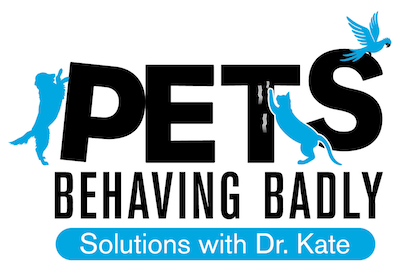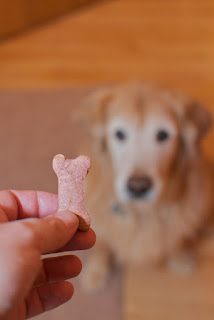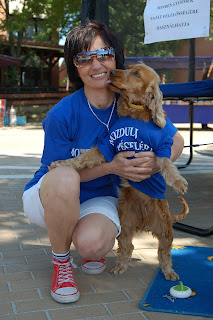Felids are obligate carnivores, specialising on a diet of animal meat and organs. In the wild, cats are free to express the full range of their normal behaviour, including feeding behaviours through locating, stalking, chasing, capturing and killing their prey; behaviours which require time, problem solving and intense activity. In contrast, the artificial and predictable environment of captivity frustrates the normal behaviour of wild felids and can lead to the development of abnormal behaviour and psychological disorders (Damasceno & Genaro, 2014).
Despite the fact that companion cats are domesticated, they too retain the instincts to perform normal, species-specific behaviour. Species-specific behaviours of the cat are very similar to that of it's wild relative, the African wildcat, and to free-roaming cats. These include social family rankings, elimination and feeding behaviours (Overall, 2005). When owners understand these normal behaviours and provide appropriate outlets for them, the behaviours are less likely to be expressed in a problematic way.
As is the case with pet dogs, our modern lifestyle is frequently in opposition to the life our companion cats evolved to live. Increasingly, pet cats are confined to the home and many do not have regular access to the outdoors. Although this keeps them and our native animals safe, many cats spend long periods of time in isolation unable to exhibit normal hunting or social behaviours. Consequently, these cats often develop problem behaviours such as aggression towards their owners (or animals living in the home); destructive scratching and inappropriate toileting inside the house.
Types of Enrichment
Environment enrichment can be divided into Animate (or social) and Inanimate (physical). Animate enrichment comprises social stimulation arising from interaction with a member of the same species (infraspecific), different species (interspecific) or both. Inanimate enrichment involves interaction with inanimate objects such as toys, feeding enrichment, olfactory or auditory stimulation (Kiddie et al., 2017).Enrichment Ideas for Your Cat
When deciding what kind of environmental enrichment to give your cat, it's important to consider your cat's breed/breed type, temperament and personality, age, health, likes and dislikes. Observe your cat's behaviour and take note of the activities they engage in of their own accord. This will provide clues about the types of enrichment your cat might enjoy most. For example, does your cat go crazy for catnip? Or do they display a strong preference for certain kinds of toys? Or is food the number one thing on your cat's agenda? Another important consideration for companion cats is that they prefer high places. This is especially true in multi-cat or multi-pet households. Being able to get high up helps cats feel safe and secure and gives them a great view of their surroundings. Tall cat towers, window beds and high shelving are just some ways to provide high up places.
Social Enrichment
Cats have the ability to live in social groups under conditions where food and space is plentiful. Affiliative behaviours such as also-grooming, also-play, nose touching and maintaining physical contact have been observed in social groups between certain individuals, indicating a preference for spending time with particular individuals. This means that opportunities to spend time with other cats may have welfare benefits under specific circumstances and where there is no competition for access to high value resources such as food, water, toileting areas and outdoor space (Ellis, 2009).
No wild-living cat gets their food for free, served up in a bowl, without having to work for it. Wild felids spend time finding, hunting and stalking their prey. They expend energy and problem solve in their attempt to catch prey. Contrast this to our domesticated cats. Even though we feed our pet cats a good quality daily diet, they still retain the instinct to perform hunting behaviour and to seek and find food. In fact, research shows that all animals prefer to work for food. It's called contra freeloading.
Feeding enrichment can be provided by feeding you cat exclusively from interactive food dispensing or puzzle toys. There are numerous such toys on the market (just Google "cat food toys") so choose one that suits the type of food you feed. For cats fed dry food we like the Kong Wobbler for cats or you could use an empty water bottle with the lid removed. If you feed your cat wet food, try using a muffin tray or an old egg carton and filling each compartment with a spoon of food. A small sized dog Kong can also work.
Feeding enrichment can be provided by feeding you cat exclusively from interactive food dispensing or puzzle toys. There are numerous such toys on the market (just Google "cat food toys") so choose one that suits the type of food you feed. For cats fed dry food we like the Kong Wobbler for cats or you could use an empty water bottle with the lid removed. If you feed your cat wet food, try using a muffin tray or an old egg carton and filling each compartment with a spoon of food. A small sized dog Kong can also work.
Play Enrichment
Daily play sessions are essential to provide your cat with an appropriate outlet for normal hunting behaviour (i.e. stalking, chasing, biting). The best toys are those that mimic prey, such as feathers attached to a fishing rod waved in the air to mimic a bird in flight or a furry toy that moves along the ground mimicking a rodent. Da Bird is a great example. You can see it in action here.
The Cat Dancer is another popular enrichment toy. It's movement mimics insects in flight. Toys that roll along the ground also entice cats to chase them and they need not be expensive. Scrunched up pieces of paper or even aluminium foil can make cheap and entertaining toys, as can empty cardboard boxes, pen lids and hair ties - as long as your cat doesn't chew or swallow them!
Appropriate outlets for hunting behaviour can help avoid aggression problems towards people and other animals living in the home. Play is also important to provide physical exercise which releases endorphins and reduces stress and boredom. Click here for the most popular cat toys on Amazon. If you're in Australia, like me, Kmart have a wonderful range of cat toys starting at just $2! Remember to rotate toys often and introduce new toys every now and then to maintain your cats interest.
The Cat Dancer is another popular enrichment toy. It's movement mimics insects in flight. Toys that roll along the ground also entice cats to chase them and they need not be expensive. Scrunched up pieces of paper or even aluminium foil can make cheap and entertaining toys, as can empty cardboard boxes, pen lids and hair ties - as long as your cat doesn't chew or swallow them!
Appropriate outlets for hunting behaviour can help avoid aggression problems towards people and other animals living in the home. Play is also important to provide physical exercise which releases endorphins and reduces stress and boredom. Click here for the most popular cat toys on Amazon. If you're in Australia, like me, Kmart have a wonderful range of cat toys starting at just $2! Remember to rotate toys often and introduce new toys every now and then to maintain your cats interest.
Sensory Enrichment
Sensory enrichment can be provided in numerous ways. Water fountains (instead of a water bowl), pheromones, scents and herbs (e.g. catnip and cat grass) can all help stimulate the seeking system and a cat's curiosity. If your cat enjoys being groomed, a daily brush can be an enriching experience.
Cat videos and cat games on YouTube showing real and animated animals can provide hours of entertainment, as can a number of phone and iPad Apps designed specifically for cats. Similarly, a window view of birds outside can be enthralling, as long as it doesn't upset your cat.
Cats are highly territorial and like to mark their territory with their smell. They do this by rubbing their cheeks on furniture (and people!) and by scratching objects which also deposits scent from glands on their paws. It's important to provide your cat with opportunities to express this normal feline behaviour in appropriate ways. Scratching posts, cat towers and scratch mats work well and help avoid your cat targeting your couch or curtains.
Cat videos and cat games on YouTube showing real and animated animals can provide hours of entertainment, as can a number of phone and iPad Apps designed specifically for cats. Similarly, a window view of birds outside can be enthralling, as long as it doesn't upset your cat.
Cats are highly territorial and like to mark their territory with their smell. They do this by rubbing their cheeks on furniture (and people!) and by scratching objects which also deposits scent from glands on their paws. It's important to provide your cat with opportunities to express this normal feline behaviour in appropriate ways. Scratching posts, cat towers and scratch mats work well and help avoid your cat targeting your couch or curtains.
Outdoor Enrichment
Many councils in Australia and other countries now enforce "cat curfews" stipulating that pet cats must be confined to the owners property at certain times of the day (usually night time) or permanently. Allowing cats the opportunity to spend time outside is crucial for their well-being. Outdoor access provides many benefits such as additional space (territory), sensory stimulation through new smells, sights, sunshine etc.
Whether you live in an apartment or a large house, own your home or rent, there are numerous options available to allow your exclusively indoor cat safe access to the outdoors. Cat netting is a great option allowing balconies, courtyards or a small section of the backyard to be sectioned off. If you're handy with the tools, you can save money with this option and do it yourself! Other companies offer outdoor cat enclosures and cat runs which vary considerably in their design and cost. Some companies will design and build a solution specific to your needs.
Remember that cats like to have access to high vantage points, where they feel safe and have a good view of their surroundings, so providing some elevated places in the outdoor space is important. You are really only limited by your imagination when it comes to providing safe outdoor space for your cat!
I've really just scratched the surface when it comes to providing your cat with environmental enrichment. I'd LOVE to hear about the kinds of things you do to enrich your cat's life! Leave a comment and share your tips.
Damasceno, J. & Genaro, G., (2014). Dynamics of the access of captive domestic cats to a feed environmental enrichment item. Applied Animal Behaviour Science, 151, 67-74.
Ellis, S. L. (2009). Environmental enrichment: practical strategies for improving feline welfare. Journal of Feline Medicine and Surgery, 11, 901-912
Kiddie, J., Bodymore, A., Dittrich, A., & Phillips, C. (2017). Environmental Enrichment in Kennelled Pit Bull Terriers ( Canis lupus familiaris ). Animals: An Open Access Journal from MDPI, 7(4), Animals: an Open Access Journal from MDPI, 2017, Vol.7(4).
Overall, K. L. (1997). Clinical behavioural medicine for small animals. Mosby - Year book Inc
Whether you live in an apartment or a large house, own your home or rent, there are numerous options available to allow your exclusively indoor cat safe access to the outdoors. Cat netting is a great option allowing balconies, courtyards or a small section of the backyard to be sectioned off. If you're handy with the tools, you can save money with this option and do it yourself! Other companies offer outdoor cat enclosures and cat runs which vary considerably in their design and cost. Some companies will design and build a solution specific to your needs.
Remember that cats like to have access to high vantage points, where they feel safe and have a good view of their surroundings, so providing some elevated places in the outdoor space is important. You are really only limited by your imagination when it comes to providing safe outdoor space for your cat!
I've really just scratched the surface when it comes to providing your cat with environmental enrichment. I'd LOVE to hear about the kinds of things you do to enrich your cat's life! Leave a comment and share your tips.
References
Damasceno, J. & Genaro, G., (2014). Dynamics of the access of captive domestic cats to a feed environmental enrichment item. Applied Animal Behaviour Science, 151, 67-74.
Ellis, S. L. (2009). Environmental enrichment: practical strategies for improving feline welfare. Journal of Feline Medicine and Surgery, 11, 901-912
Kiddie, J., Bodymore, A., Dittrich, A., & Phillips, C. (2017). Environmental Enrichment in Kennelled Pit Bull Terriers ( Canis lupus familiaris ). Animals: An Open Access Journal from MDPI, 7(4), Animals: an Open Access Journal from MDPI, 2017, Vol.7(4).
Overall, K. L. (1997). Clinical behavioural medicine for small animals. Mosby - Year book Inc


































